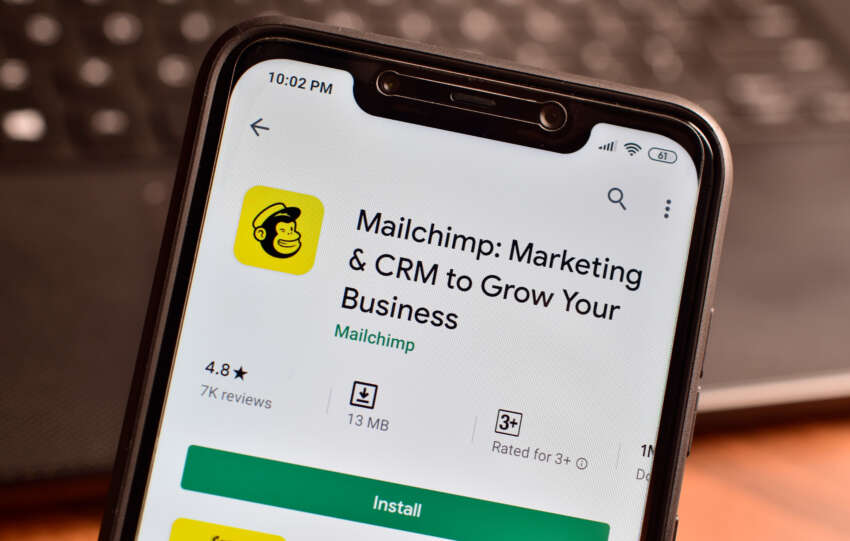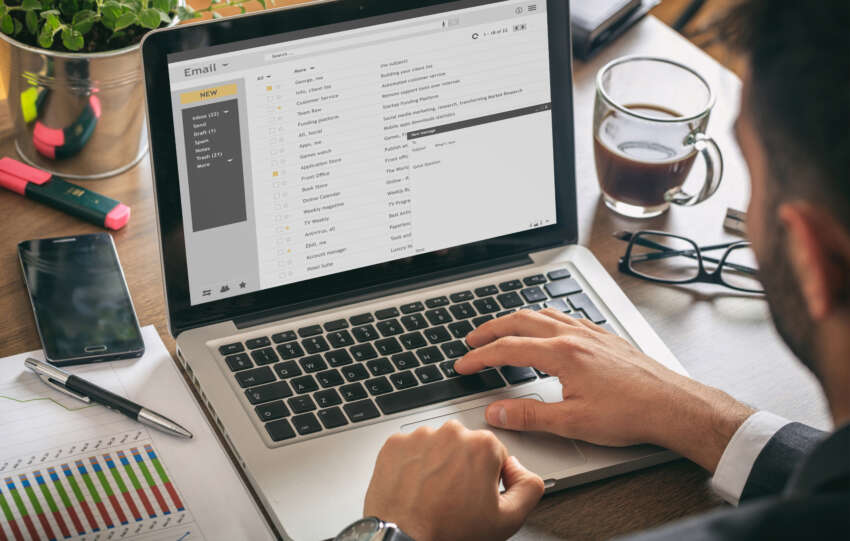10 Steps to Email Campaign Mastery: A Comprehensive Guide

Did you know 293.6 billion emails are sent and received every day? According to Statista, that figure will escalate to a whopping 347.3 billion by the year 2022. These figures make it evident that competition is growing every day.
That’s why it becomes imperative to do your email marketing right. From reaching your target audience to keeping their interest in your brand intact, your email marketing campaign should be able to do it all.
What is an email campaign?
Before we delve deep into various steps to ace the email marketing campaign, let’s see what email marketing campaign is all about. An email marketing campaign helps marketers in sending emails to their customers and prospects. A successful email marketing campaign encourages customers to take action, thereby enhancing your conversion rate. That’s the reason 87% of marketers use email marketing to promote their content.
One of the biggest advantages of email marketing is its wide usage. After all, HubSpot tells us that 99% of people check their emails every day. This makes email marketing the best tool to develop customer relationships while increasing your ROI. Imagine spending $1 and getting returns as high as $44. That’s exactly what email marketing does.
Moreover, the vast majority of SMBs are already using email as their primary acquisition channel. So, if you haven’t thought of joining the email marketing bandwagon, it is high time you do it.
How do you run an email campaign?
Before going ahead with a successful email marketing campaign, you need to follow certain steps to develop a strategy that’s not only top-notch but drives results too. Here’s a 10 step guide to help you ace your email marketing campaign.
01 – Create a targeted email list
An email list is a critical aspect of email marketing. So, make sure you have an organically built email list with valid email addresses. You can do so by creating a well-crafted landing page or opt-in forms that act as a lead magnet. Try offering something valuable to the subscribers in exchange for the email address.
Also, make it a point to convey your message clearly through your landing page. Besides, instead of relying on a single landing page and asking everything to your subscriber at once, it is better to create subsequent landing pages with questions according to their engagement level.
02 – Understand your objectives and goals
If you want to run a successful email marketing campaign, you must know what you want to achieve. The goals and objectives that you should consider include:
a) Welcome new customers onboard
The first and foremost step is welcoming subscribers who sign up for your brand. You can make a good first impression with your welcome email by briefing them about your business and values. It will help you in building a strong relationship with them. Subscribers about their beauty products to enticing them to purchase through robust multiple CTAs, Glossier’s welcome email has all the elements to hit the customer’s right chord at the right time. They have also gone a step ahead and included real-life stories of customers with a connection to Glossier.

Source
b) Boost your engagement
From promoting a webinar to striking a chord with the customer for making an initial sale, email helps you convey various messages to enhance engagement.
c) Nurture your subscribers
It is important to nurture your existing subscriber base by giving them something that they will value.
d) Segment your subscribers
Segmenting your subscriber base is critical for sending them more targeted email marketing campaigns.
03 – Decipher the kind of emails you have to send
It is also critical to have an understanding of the various kinds of emails that you can send. Here’s a quick look at three broad email types:
a) Promotional emails
Promotional emails work as a self-promotional tool and give customers an idea about various sales and offer that a brand is willing to give them. See how MODERNICA does it like a pro in its HTML email template promoting Black Friday sale. They have made good use of FOMO, i.e., fear of missing out, to encourage subscribers to shop their limited edition collection. Besides, the 15% discount is also a great way of motivating people to purchase.

b) Relational emails
Relational emails help you foster your relationship with your customer base by offering them what you promised. From a weekly newsletter and a gift to relevant information, relational emails help you send it all and win customers’ appreciation. Here’s a visually appealing weekly newsletter example from ActionRocket. See how they have made good use of weekly newsletters by giving their subscribers insight into top email design reviews.

c) Transactional emails
Transactional emails are automated emails, triggered based on a subscriber’s action. It includes sign-up confirmation emails, welcome messages, order or purchase confirmation emails, and so on. You can take some inspiration from the order confirmation email template of Affinity. They have done a good job by personalizing it with the name of the subscriber. Further, they have included the order details in a brief yet clear way while thanking the subscriber for their order.

04 – Get insights into your audience
It is important to know about your audience. As mentioned earlier, you can collect some real data through subscription and opt-in forms. Also, you can gather relevant data through Google Analytics and Facebook insights. From data on demographics and locations to insight into customer interest, you will get a clear picture of your customer’s interests and buying habits through these tools.
05 – Make a plan for sending emails and follow-ups
By now you must be well acquainted with your goals, email types, and your target audience. So, you can start planning your email marketing campaign by keeping the following points in mind:
- The frequency of emails
- The types of emails you need to send
- A simple idea of the email content
- The action you want your subscribers to take, which can range anywhere between signing up for an event or buying a product or service from you
In short, you must make your emails timely, relevant, and interesting while planning your email marketing campaign
06 – Create an impeccable subject line
Once you have an outline of your email campaign, you can draft your email subject line. It plays a critical role in enticing users to open and click-through your emails.
From giving people a precise idea about your email’s content to adding a touch of personalization, a good subject line should have it all.
07 – Make your email copy world-class
If you want your subscribers to read your emails, make sure your email copy is top-notch. For extracting the best results, keep your email copy short. Also, before you pitch any sales or offers, let people get comfortable with your brand. You can add a touch of personalization in your email copy. From addressing your subscribers from their first name to targeting users based on their interests and preferences, there is a lot you can do through your email copy.
Further, a personal story, content that gives value, and including interactive elements are few of the many ways an email copy can help you engage your subscribers. Take a look at this HTML email template from Dunkin Donuts. It hasn’t only addressed the user from his first name but also made the email visually appealing by including a GIF into it that perfectly matches the Mother’s Day vibes.

08 – Don’t neglect your email designs
No matter how good your email copy is, it is of no use if the design is not up to the mark. Remember, your email’s purpose is to get the message across your audience while enticing them to take action. From fonts and typography to formatting and having responsive templates, make sure your email design is smooth. It would help if you stayed away from the clutter and irrelevant elements while making your CTA stand out. See how ILIA has made good use of white space in this email and kept the message to-the-point along with a robust CTA.

09 – A/B test your email campaign
Whether it is your subject line, preheader text, email layout, images, or CTA, you must check whether they are resonating well with your subscriber base. You can do so through A/B testing. Start by setting up two variations of a single campaign and send it to a small portion of your total recipients. While half of the test group receives version A of the campaign, the other half receives version B. Further, the result is measured by the most opens or clicks. The version with the highest opens and clicks is declared the winning version and is sent to the remaining subscribers.
10 – Track your email marketing performance
It would help if you also tracked important email metrics such as click-through rates, open rates, unsubscribes, spam rates, and so on. This will give you a clear idea about what’s working for your email campaign and what’s not. However, make sure you track your email marketing performance consistently. You can do so by establishing a tracking schedule. It can either be weekly, monthly, or campaign by campaign. It will help you analyze your progress against previous performance, thereby making it easy to spot improvement or decline patterns.
Here’s a screenshot that throws light on how the email campaign has performed in terms of open rate, click rate, and time spent viewing the email. You must monitor these metrics for every email, and if you observe a dip in the open or click-through rate or a sudden rise in unsubscribes or spam complaints, you must revisit the campaigns and optimize them for better results.

Wrapping up
That’s everything you need to know about running a successful email marketing campaign. Remember, email campaign management is a part of email marketing. Therefore, if you carry your email marketing campaign the right way, it will increase the efficiency of your overall email marketing strategy and, of course, boost your sales and ROI.
Take some cues from the above-mentioned guide. It will surely help you attain your email marketing goals.




